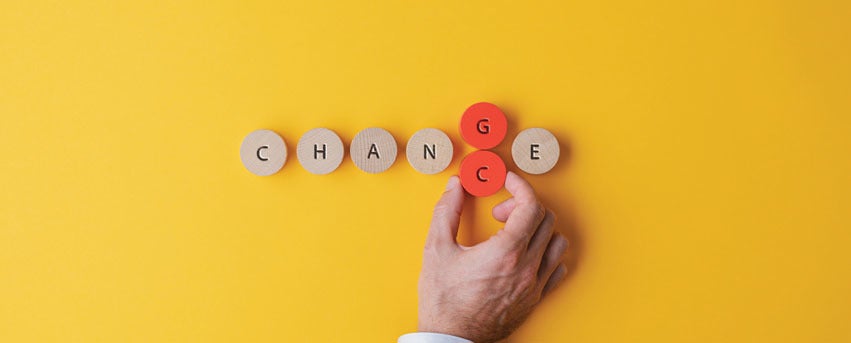
If you lead a team, you will never have enough time, energy, or resources to do everything that needs doing. So, why take something that isn’t broken, something that is actually working fine, and break it apart?
It seems counterintuitive and even destructive, and yet sometimes it is exactly the right thing to do. It all comes down to breaking routines. Sometimes we make a conscious choice to break these routines. Sometimes, as we see in the COVID era, external events break our familiar routines for us.
Routines have obvious value. They are predictable and therefore require little energy to execute, generating comfort and security. Sometimes, however, routines can become stagnant and brittle, crutches that limit innovation. This is why leaders need creative destruction in their toolkit. This is not about fixing something that is clearly already broken. This is about shaking things up by disrupting something familiar and causing discomfort in order to force new thinking.
Unleashing creative destruction
Creative destruction can act at the individual, team, and even the organization level. A small change of habit can precipitate new understanding and insight. This is because our brains shift from “autopilot” mode — the unthinking state that allows us to navigate through the familiar and unremarkable without expending our limited attention — into a more conscious state. Caroline Webb describes this as bypassing the “automatic spam filter” that we all have in our brains. By altering a routine, it no longer becomes routine, forcing us to approach it with a more awake and aware mind.
I find this insight simple and profound in equal parts. Swapping the unfamiliar for the familiar can help you arrive at new connections and insights.
Here are some recent changes we made that show this in action:
- Changing our meeting culture. Even before COVID forced us to rethink our meetings, we had already altered our approach to getting together. We discarded our effective but well-worn meeting protocols for new principles and structures. Suddenly, routine meetings no longer felt so routine, which encouraged more open and interactive discussions. While our new model may not yet be as efficient as the old one, it feels more effective.
- Bringing new perspectives into our leadership team. Like most organizations, our leadership team was a reflection of the org chart: The most senior people became the leadership team de facto. To change this dynamic, we introduced new people from different parts of the organization into the team. It is a bigger challenge to manage, but the payoff is fresh energy and new perspectives, amplifying the quality of our discussion and decision making.
- Altering our NDA process. Like most large companies, we execute thousands of non-disclosure agreements each year. For years, this important but routine task was handled by one of our partners, who did a fine job. But “fine” is merely … fine. Seeking better, we transitioned that work, to induce fresh thinking and “new eyes” on an old process. With some anticipated bumps, it has led to a sharp uptick in speed and throughput across the board.

Small changes, big results
As you can see, these are not radical changes. When it comes to creative destruction, small shifts can yield disproportionately large results. Your goal shouldn’t be to “blow things up,” but rather to introduce fresh and dynamic thinking. Just by doing something that’s not routine, you necessarily shift the way you think and operate and open new potential pathways to value.
No one enjoys feeling uncomfortable or anxious. It is human nature to want to pull our old, safe habits around us like a familiar blanket. But when you are trying to achieve exceptional performance, when “good enough” isn’t good enough, this type of creative destruction is essential. Entering a decade that is likely to be the peak of socio-economic, technological, and geopolitical disruption, I doubt that our familiar routines of today will yield the same value tomorrow.
To achieve continuous improvement, you have to be destroying something, somewhere, at all times. It is analogous to the practice of muscle confusion, when you change your workout routines to avoid plateaus, shocking your muscles by using them in new ways. The idea is simple but embracing the right kind and amount of discomfort is hard.
This may — in fact, it should — make you and your team uncomfortable. But isn’t everyone already deeply uncomfortable? Will there ever be a better time to question how we work and embrace the challenge of optimizing our current environment, rather than forcing old routines into the “new next”? If you are serious about pushing your limits, it needs to be part of your leadership style. Get started breaking something today.




